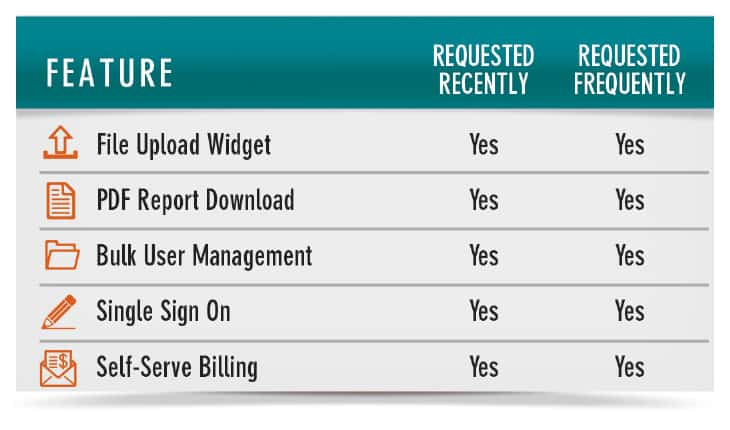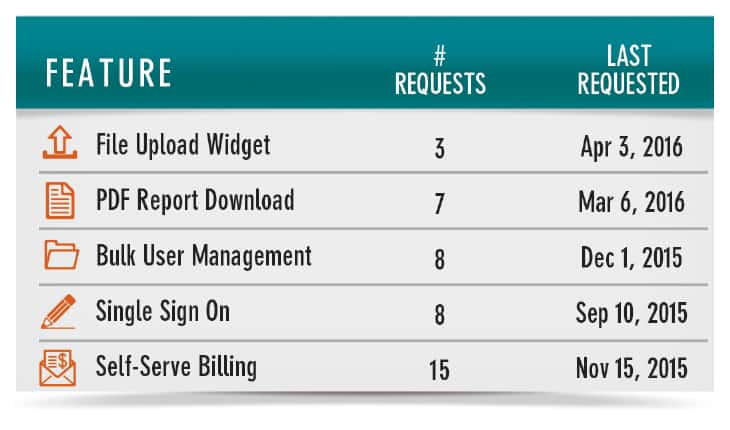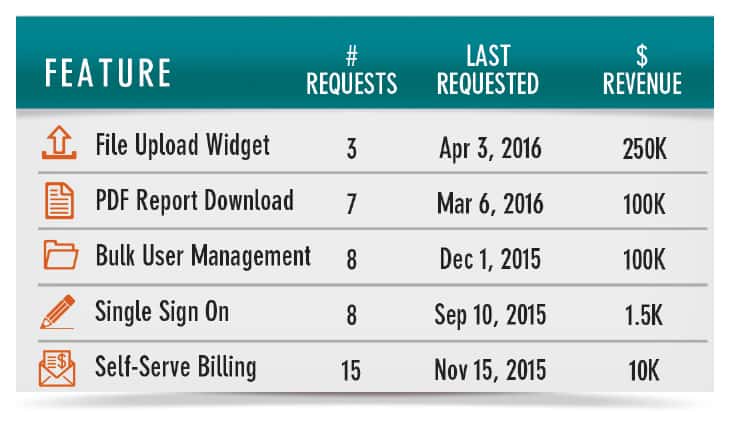In any given day, your company makes thousands of decisions. Big ones. Small ones. Some have many dependencies, others have none. If your company is like most, chances are that it fits one or more of the following conditions:
- It lacks a process governing how product decisions are made
- It has a governance model for decisions, but it is too lax
- It has a governance model, but it is too cumbersome
- It has a governance model, but it is incoherent or poorly understood
In the absence of a coherent process, a variety of approaches and tools will fill the void. This can happen at the business-unit level, where each unit is organized and makes decisions differently; or it can happen at the team level, where individuals plan and prioritize according to their own homegrown, spreadsheet-based formula.
Once it takes root, this ad hoc decision-making can dramatically impede product success by eroding credibility and trust, introducing bias and obstructing repeatable processes. Here’s what to look out for when assessing your organization’s ability to swiftly make decisions and prioritize work that solves
the right customer problems.
Frequency and Recency
It’s a fact that, as humans, we are more likely to recall things if they have been mentioned frequently or recently. That is why advertisers like to show the same brand message multiple times over a short time period.
This can have obvious consequences when it comes to product planning. When all else is equal, a product team that is asked to produce a plan is more likely to prioritize items they’ve heard recently or frequently.
Now, you shouldn’t avoid paying attention to things you hear frequently. In fact, frequency is a fairly reliable indicator of pervasiveness, which is a fundamentally good dimension to consider in determining the biggest customer problems. The problem, in our experience, is that you usually end up with something that resembles this table.
This is great if you plan to build all five features. But what happens if you only have the resources to build three? How do you weigh these items by relative importance? And what about requested features that didn’t end up on this list? It’s entirely possible that a large, strategically important customer has a need that’s not represented on the list.
Better would be something like this:
And better still would be the following, which includes total revenue attached to the feature requests from all potential customers:
To reduce frequency and recency bias, you must generate a comprehensive and accurate view of all customer needs—not just the ones you heard about last week. In the B2B world, generating this list requires teamwork; you must engage members from sales, customer success and other customer-facing teams.
HIPPO-Led Decisions
It’s a bad idea to let the highest-paid person in the office (HIPPO) make product decisions if that person is wrong. The problem is that this isn’t always clear. And, even when it is, no one wants to tell the boss their ideas are bad.
HIPPO-led decision-making can have a number of side effects. First, it can discourage smart people from doing their best work. If everyone knows your CEO will dictate what he wants on the roadmap—regardless of alternate recommendations—they will be less motivated to think long and hard about tough customer problems.
Second, relying on a HIPPO is neither a scalable nor repeatable approach to making effective product decisions. Who calls the shots when the HIPPO leaves the company? What happens when you grow past 100 employees? Startups with strong-minded founders face particularly challenging dynamics in this regard.
Finally—and perhaps most important—a HIPPO is often the farthest removed from customers and has the least insight into what customers actually want. The decision by Kodak CEO Walter Fallon not to pursue digital technologies—despite the fact that Kodak engineers had already developed the first digital camera in 1975—is just one example of C-level decisions that are out of touch with customers and the market.
LOVR-Led Decisions
As anyone with a 2-year-old can attest, it’s hard to ignore someone who’s emphatic and persistent. The loudest voice in the room (LOVR) is not that different; they can have a major influence on the product decision-making process. This fact poses a number of challenges.
First, like 2-year-olds, LOVRs drown out the other voices in the room, making it difficult to identify and listen to the needs of quieter, more introspective individuals. This leads to a narrower, less diverse set of perspectives from which to inform your decision-making process.
Second, and less obvious: If you give LOVRs what they want, others will soon learn that the only way to get your attention is to be loud. When this happens, your team will treat every minor feature request or customer need like the sky is falling.
Finally, and somewhat counterintuitively: the loudest voice in the room—that noisy board member, for example—may actually be dispensing valuable information. Put differently, don’t mistake someone who is loud for someone who doesn’t know what they’re talking about.
Collective Belief
In a 2003 Harvard Business Review article that analyzed several spectacular product failures, Isabelle Royer uncovered the reasons why companies continue funding development and marketing efforts for failing projects:
Hardly the product of managerial incompetence or entrenched bureaucracy, the failures I’ve examined resulted, ironically, from a fervent and widespread belief among managers in the inevitability of their projects’ ultimate success.
If you’ve ever listened to people in a meeting parrot non-empirical, self-reinforcing statements about a particular product or project, then you likely have witnessed at least the beginnings of what Royer dubs collective belief.
Similar to groupthink, collective belief can be incredibly powerful. It can align your organization around a specific vision, enabling teams to move quickly. After all, aren’t you supposed to have strongly held convictions and stay laser-focused on your vision of success? Isn’t that what it takes to build great products?
Yes, but you need to ensure your vision for product success doesn’t blind you to information that contradicts that vision. As Royer observed, organizations that stay the course in the face of mounting evidence that they’re on the wrong track waste vast amounts of time, money and resources on products that are ultimately mothballed.
Going on Gut Decisions
Yes, gut decisions are sometimes necessary, and they may result in successful outcomes. The problem? Basing your decisions on intuition makes it almost impossible to repeat your successes and—perhaps more important—avoid repeating your failures.
Going on gut has a number of other downsides. It can be difficult to explain why certain decisions are made, so this information may not be shared broadly within a business unit or organization. When this happens, gut decisions may cause confusion about strategy and—in the worst cases—erode credibility and trust within your organization. These dynamics become ever more pronounced when gut decisions result in failed product decisions.
Finally, if you’re prone to confirmation bias—which we all are to some degree—then making decisions based on intuition can lead away from product success. When your decisions result in good outcomes, you’ll confirm your gut mode; when they result in bad outcomes, you’re likely to omit them from your mental record.
The Steve Jobs Fallacy
It’s tempting to think that great products originate from a singular genius. Let’s face it, it’s a cleaner, sexier narrative: A lone genius goes off in the face of great adversity, against the will of naysayers, to come up with a product so revolutionary that it spawns its own new category.
In reality, product development is far messier—and involves far more minds—than a single product visionary. It’s worth recalling that even Steve Jobs relied on reams of market research and his team’s input when he conceived of and developed game-changing products like the iPad.
Instead of waiting around for a singular genius to solve your product challenges, get everyone involved: your customers and internal stakeholders, your net promoters and your detractors, and your HIPPOs and LOVRs.
Building great products and getting them to market is hard. And no one is immune to bias. But the good news is that you don’t have to do it alone. When supported by the right framework and technology, you and your team can identify prevailing pitfalls and take a repeatable, data-informed approach to focus on what matters most.
Author
-

The Pragmatic Editorial Team comprises a diverse team of writers, researchers, and subject matter experts. We are trained to share Pragmatic Institute’s insights and useful information to guide product, data, and design professionals on their career development journeys. Pragmatic Institute is the global leader in Product, Data, and Design training and certification programs for working professionals. Since 1993, we’ve issued over 250,000 product management and product marketing certifications to professionals at companies around the globe. For questions or inquiries, please contact [email protected].
View all posts











